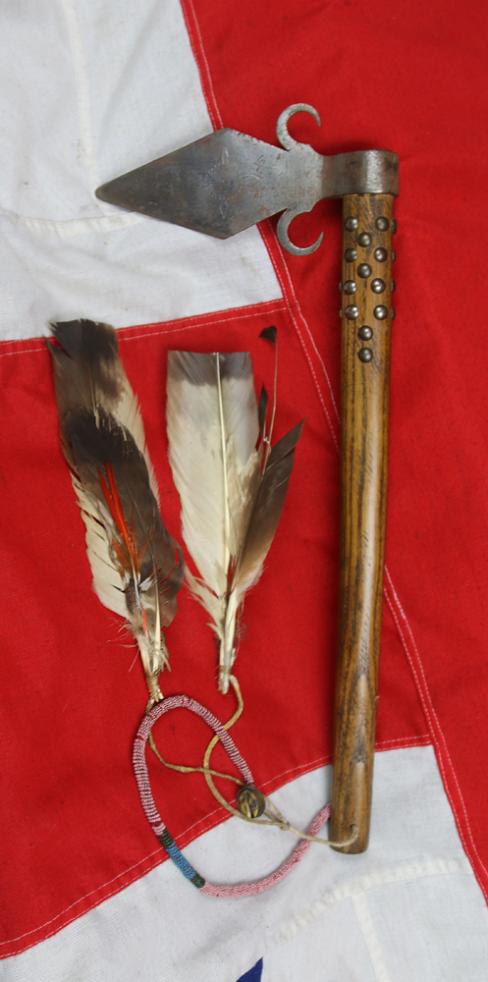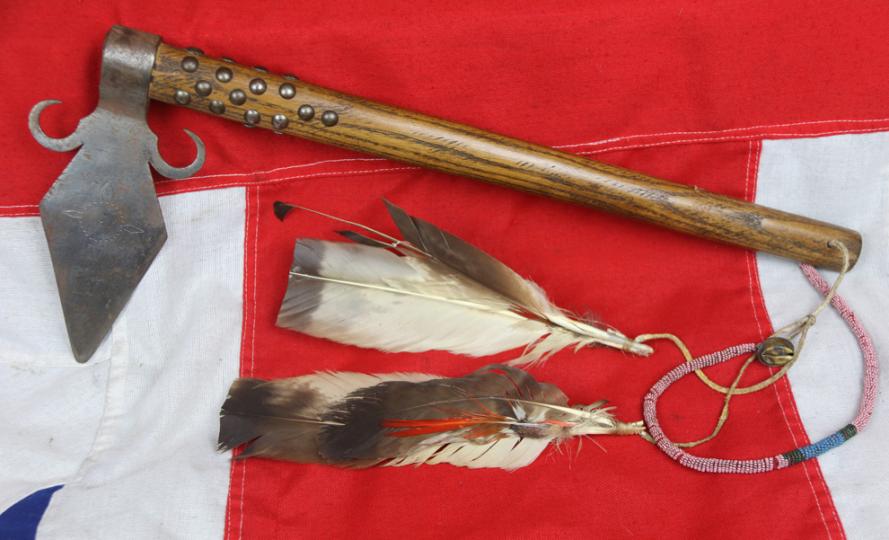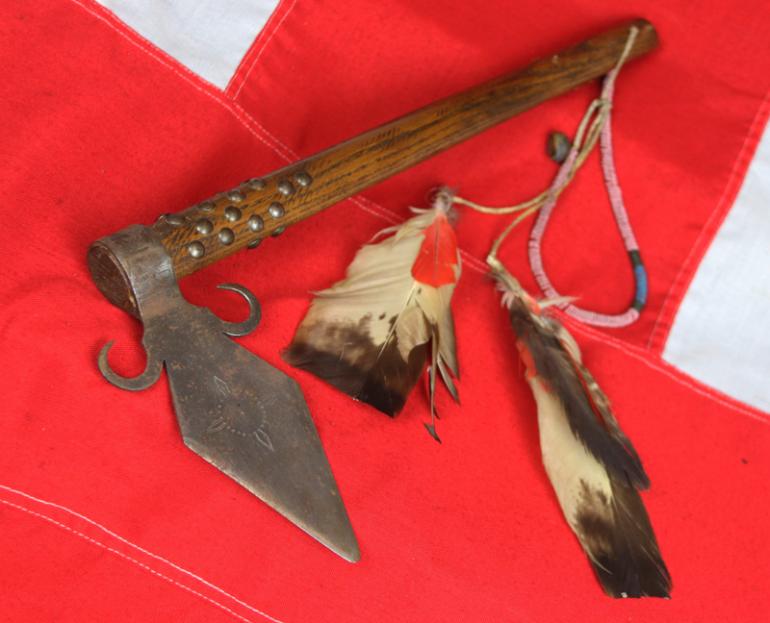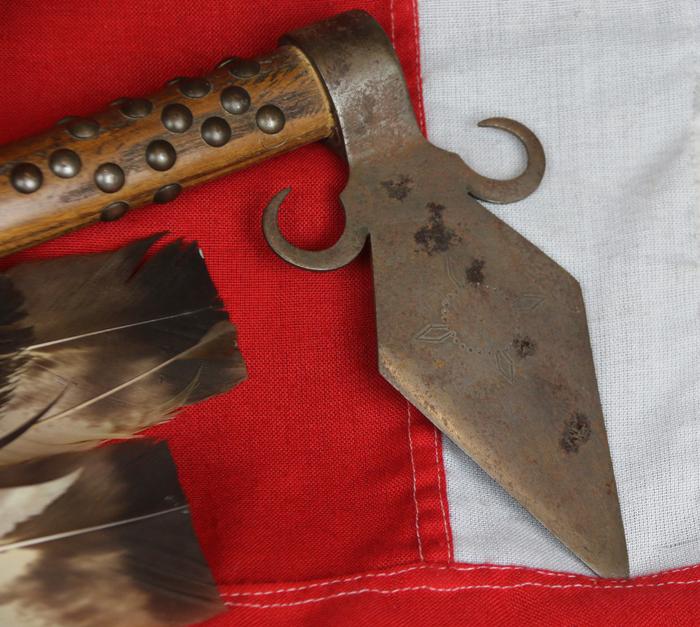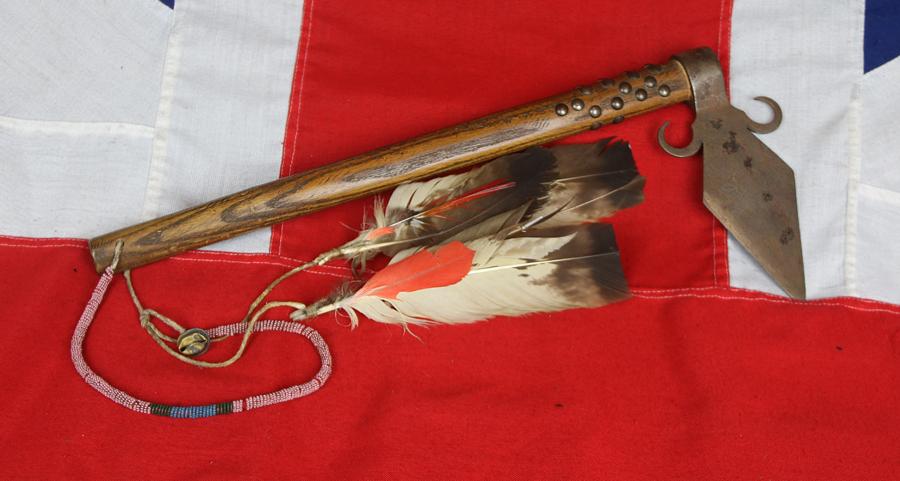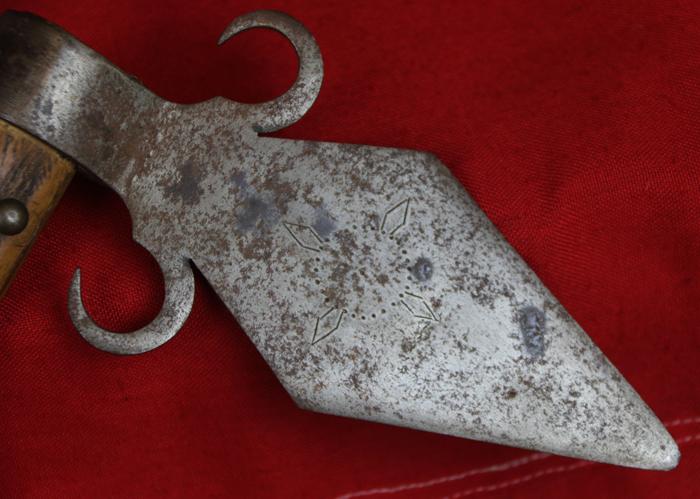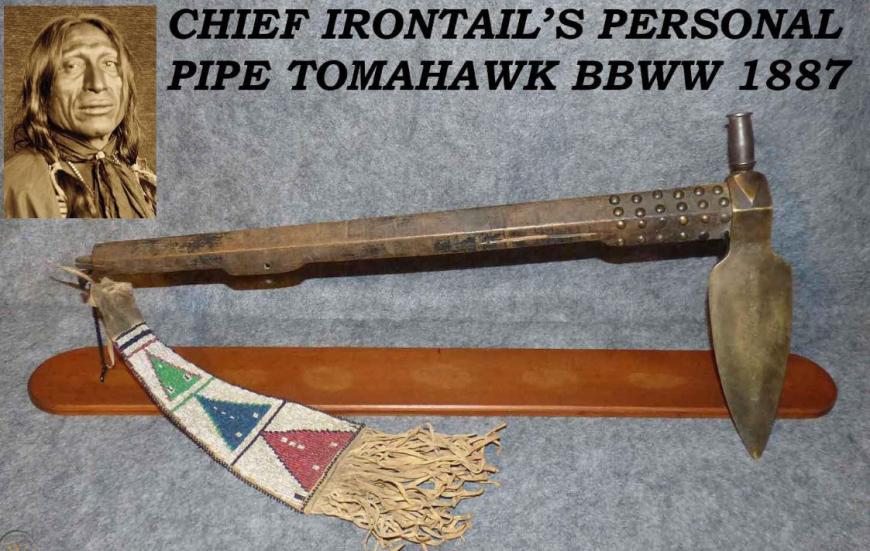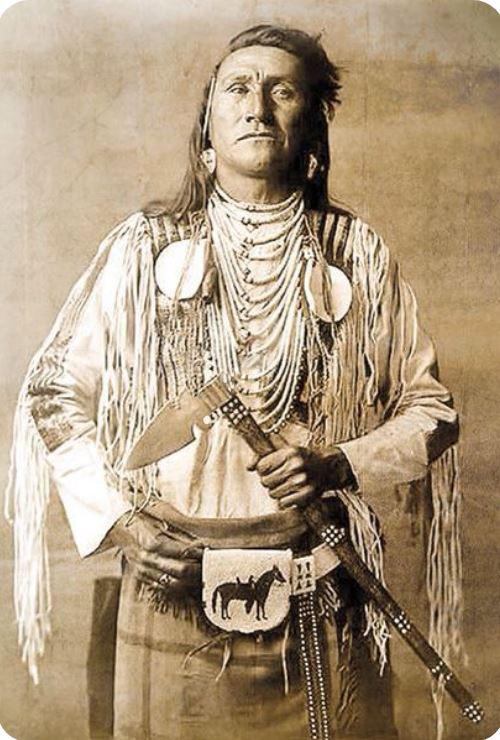A Superbly Attractive, Native American Indian 'Spontoon Head' Style Tomahawk with Studded Haft, Glass Beads, and Eagle Feathers.
Great Lakes style. Rarely seen in Europe, a large spontoon trade style tomahawk axe head, with 2 large hook quillons on either side of the head. The head itself is a work of art, engraved with four spontoon heads at north south east and west, and nail point stamped create a circle. Possibly forged by an unknown blacksmith. The blade and head show a nice natural patina, and old brass tacks along the handle. They are domed head brass tacks set in an ash wood haft. The haft has a hole drilled for attaching an old beaded drop and eagle feathers with a piece of thin buckskin cord, the eagle feathers have been cut across the top, this is an old Lakota symbol of 'cutting an enemy's throat'. In excellent condition, It somewhat reminds us of the late 19th century spontoon head tomahawk of Chief Iron Tail of the Oglala Lakota Nation. He was a famed late 19th century celebrity Sioux, but it was as a star performer in Buffalo Bill's Wild West in the 1880s that brought this Sioux to the attention of world leaders and American audiences; as many as 12,000 people attended the live shows each day. It was the quintessential last vestige of the American West and passing century of discovery. When performances went overseas, Iron Tail was still Buffalo Bill's lead performer, and also his avowed best friend. He nicknamed Bill "Pahaska" or "Long Hair." In the West they hunted; in Europe, they toured historic sites, often hosted by royal aristocracy, traveling together until 1913.The spiked tomahawk, made along the lines of medieval European battle axes, had either a straight or curved spike projection at the top of the hatchet’s head.
The Missouri war axe, a large, thin-bladed hatchet with a short handle, was favoured by tribes along the great bend of the Missouri River.
The spontoon tomahawk, with its dagger-like blade and curled or winged-like appendages, suggested a fleur-de-lis-shaped battle axe.
Although least practical as a cutting or chopping tool, each one of these tomahawks made formidable hand weapons and held some favour with Indians because of their graceful and artistic shapes.
Regardless of style or shape, like the Indian’s bow and lance or the white man’s rifle and revolver, the tomahawk was as important a practical tool as it was a weapon of combat. Whether left plain or adorned with tacks, beads, coloured cloth, feathers, animal parts or even human appendages, the tomahawk also served as a symbol, representing the choice between peace or war, when white and red men met. While the first iron hatchets and tomahawks in America came from British and French sources in the northwestern territories and the Spaniards and French in the south and southwestern regions of the frontier, the first American tomahawks probably appeared in the Far West during Meriwether Lewis and William Clark’s 1804-1806 expedition. Nevertheless, by the early to mid-19th century, the iron tomahawk had become a standard trade item and fighting implement of frontier Indians. This tomahawk is not an 18th century or early 19th century example, today those examples are now valued in the tens of thousands of pounds, and furthermore may now never leave American shores. This axe is likely 19th century or later. Surface pitting to the iron and small blackened staining to the iron on one side. We cannot ship this item to the US, because Native American items are not permitted imports into America
Code: 23398
1695.00 GBP

